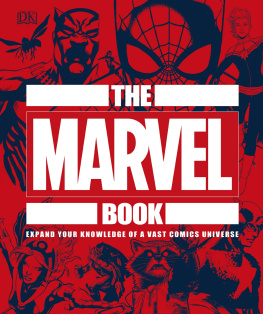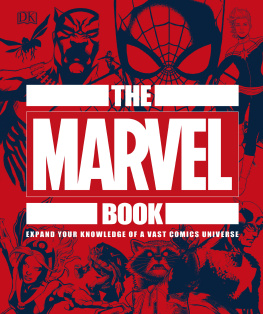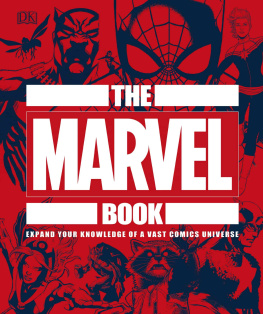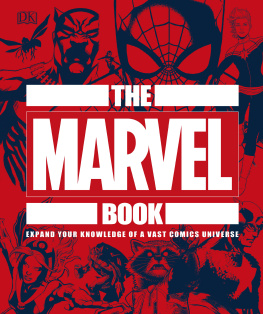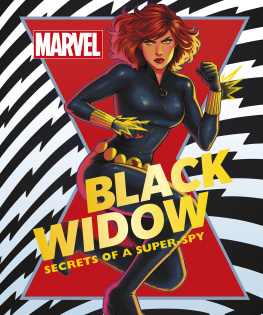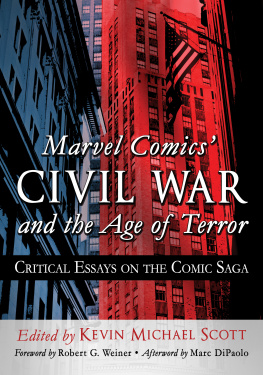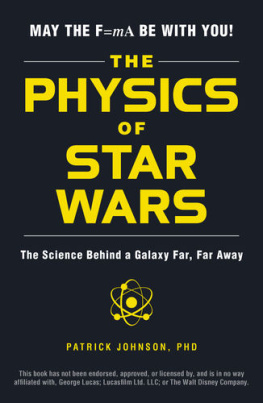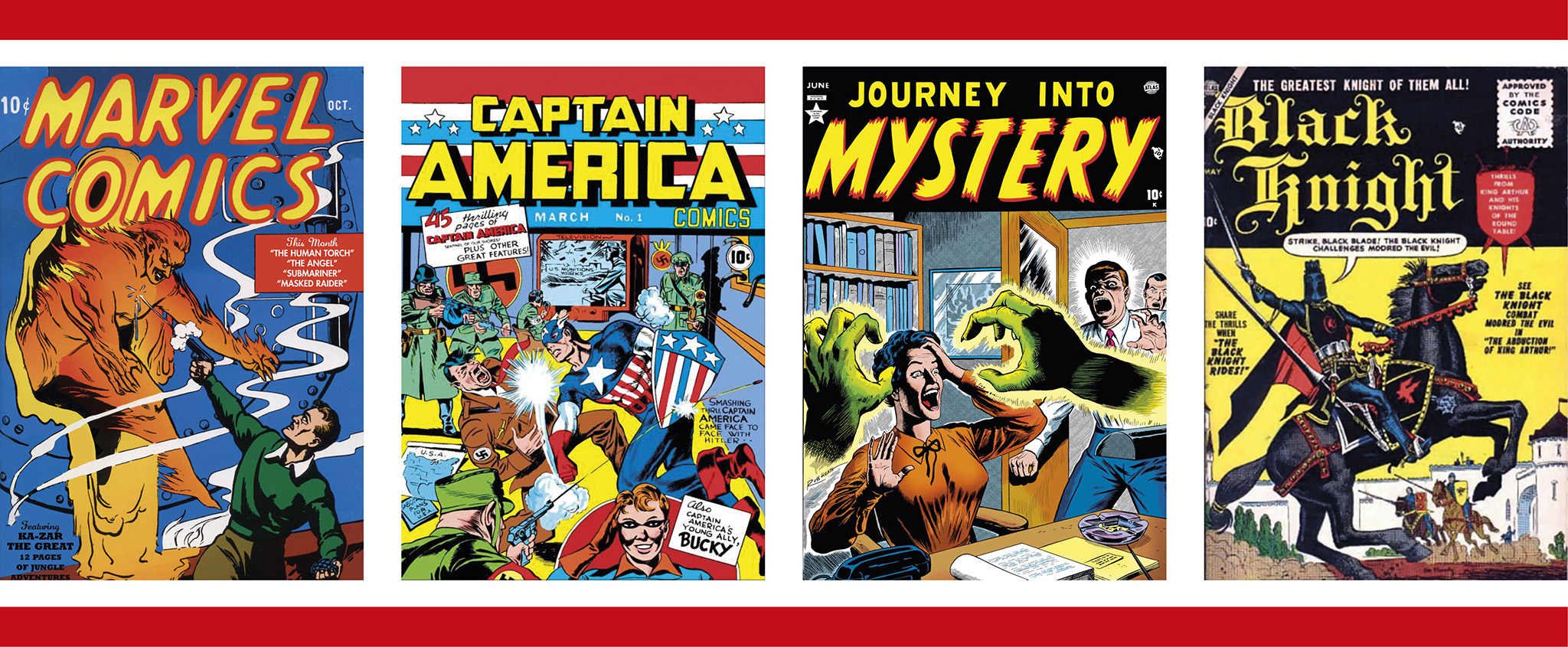INTRODUCTION
The multimedia phenomenon we all know as Marvel began in the Fall of 1961 when comic book editor and writer Stan Lee and his top artist Jack Kirby created the companys first Super Hero comic in six years. The move would revolutionize an industry slowly emerging from a bleak downturn, but which had once enjoyed massive popularity.
Comic books were invented in 1933, but didnt really take off until 1938, with the creation of Super Heroes. Immensely and instantly popular, and generating astounding sales, the innovation galvanized established book and magazine publishers, who clambered aboard the gaudy bandwagon. Soon, dozens of companies had their own contingents of mystery men.
Publish and be damned!
One such company was Newsstand Publications, owned by Martin Goodman, which offered numerous pulp magazines (prose periodicals) in a range of popular genres: science fiction, westerns, detectives, sports stories, jungle adventures, and more. In 1939, Goodman founded Timely Publications to exploit the Super Hero craze. Outsourcing creative duties to professional writers and cartoonists, he published Marvel Comics #1 in October 1939, which introduced the Human Torch and Sub-Mariner to the world. Also included in the anthology were gag pages, prose short stories, and three other comic strip adventures: the western Masked Raider, and two revamped Goodman pulp stars hard-boiled detective the Angel and jungle lord Ka-Zar the Great.
With a monster hit on his hands, Goodman renamed his hit title Marvel Mystery Comics, and began flooding the newsstands with more of the same. In 1941, Timely struck gold a second time when industry innovators Joe Simon and Jack Kirby created Captain America, an icon of the era as the US entered World War II. Success triggered explosive expansion. Goodman stuck with a tried-and-true pulp formula, creating similar patriotic warriors while also developing comics for every conceivable genre, and canceling anything that wasnt an instant success.
In 1947, Timely transformed into Atlas, a major comics player relentlessly following sales trends. Atlas was the name of Goodmans distribution arm, selling not just comics but periodicals, books, and magazines. Comic book readers, however, simply came to recognize the Atlas logo on covers as a mark of quality thanks to many of the industrys greatest names producing impressive, memorable work.
I was tired of doing monster mags. Joan (my wife) wanted me to make something of myself in the comic-book field. The timing was perfect. The elements were all at hand. Kismet.
Stan Lee
Atlas shrugged
Back in 1939, Goodman had hired his wifes cousin, 17-year-old Stanley Leiber, as a general office assistant. Two years later, after his comic book managing editor Joe Simon quit, the apprentice became the new boss. Barring his war service, Leiber, who later changed his name to Stan Lee, would steer the comics division for decades to come, ultimately changing the face of comic books. In the years before television ownership was widespread, comic books were hugely successful. However, the advent of free entertainment in the home changed everything. Rapid shifts in reading tastes made it hard to repeat the comic book successes of the war years. Readers failed to distinguish one cowboy hero or funny animal from another, and comics began to increasingly rely on licensed stars of film and TV to headline their titles. In the early 1950s, Atlas tried to revive Captain America, Sub-Mariner, and the Human Torch, but the public werent buying it. Literally.
To make matters far worse, the industry came under concerted fire for corrupting Americas youth. The attack was sparked by one Dr. Fredric Wertham, a child psychologist who claimed to have found a causal link between violent comics and juvenile delinquency in his 1954 book The Seduction of the Innocent. Seized on by the media, the issue became so heated that it resulted in Senate hearings in 1954. It prompted those publishers that managed to survive the ensuing public scrutiny and censure to institute a draconian self-regulatory Comics Code Authority to prove they had cleaned up their act. It wasnt enough. In 1957, Atlas distribution foundered and their comic book line imploded, barely hanging on with a skeleton staff, and only publishing 16 titles every other month. Popular genres included teen humor, westerns, and science fiction monsters, however industry leader National Periodicals had just begun reviving Super Heroes for a new space-age generation. This time the kids were on board and sales started slowly rising. Legend has it that Goodman, ever sensitive to trends, told Lee the company had to give Super Heroes another go.
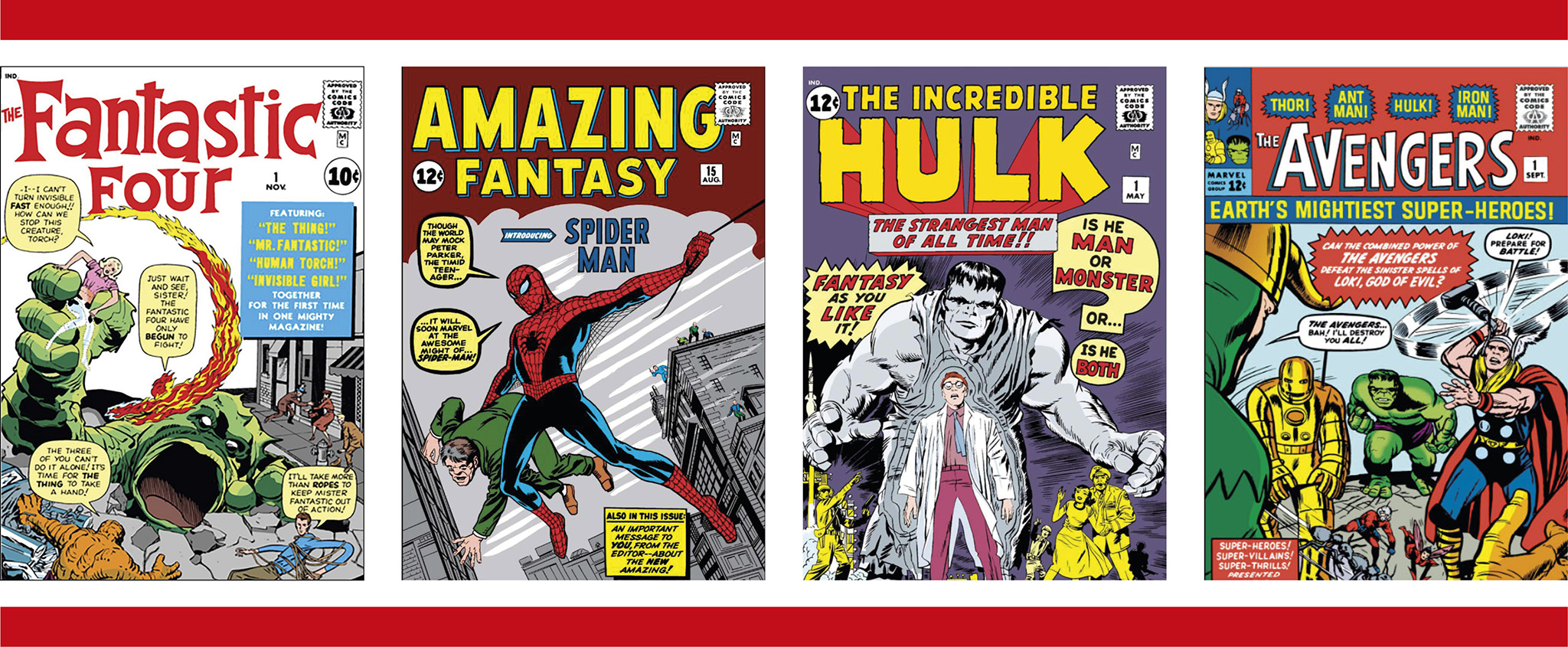
Marvel Tales
When Stan Lee and Jack Kirby launched the Fantastic Four in 1961, they discarded all preconceived notions for costumed crusaders. Rather than being comradely and clean cut, these were almost heroes by accident: raucous, self-absorbed, and argumentativeand they didnt wear costumes! These superhumans were all too human. It was a revelation and an instant hit with a new generation of readers: savvy, college-age kids keenly attuned to a fast-changing world and more than ready for relatable stories, mature themes, and complex characters.
Upsetting the status quo became the norm for the newly named publisher Marvel Comics, as Lee and his growing band of cocreators debuted, in swift succession, a range of compelling antiheroes and resplendent Super Heroes. One was a misunderstood, gamma-irradiated monster called the Hulk; another a nerdy teenager whose guilt makes him become the hero Spider-Man; and another who claimed to be a Norse god, stranded on Earth by his father to teach him humility. And none were really trusted by those they saved or the public at large. That outcast theme shades all eras of Marvels output and continues to this day: from mutant outsiders the X-Men and alien gangs such as Guardians of the Galaxy, to crazed vigilantes like the Punisher and the lunatic mass murderer Deadpool, to the satirical comedy relief of Howard the Duck and Squirrel Girl.

